The pH of natural water is “neutral” however the introduction of minerals and other contaminants changes the nature of the water and causes pH fluctuations which can be mitigated by filtration, purification, and/or ionization. Further to this, some believe that artificially increasing and maintaining the pH level for drinking water may have health benefits. I will be pragmatic in my research and conclude with what I believe is the best pH level for drinking water.
pH Level of Water
The acidity, neutrality, or alkalinity of water is determined by a pH measurement on a scale ranging from 0-14 such that:
- = 0 to <7 solution is acidic
- = 7 solution is neutral
- = >7 to 14 solution is alkaline (or basic)
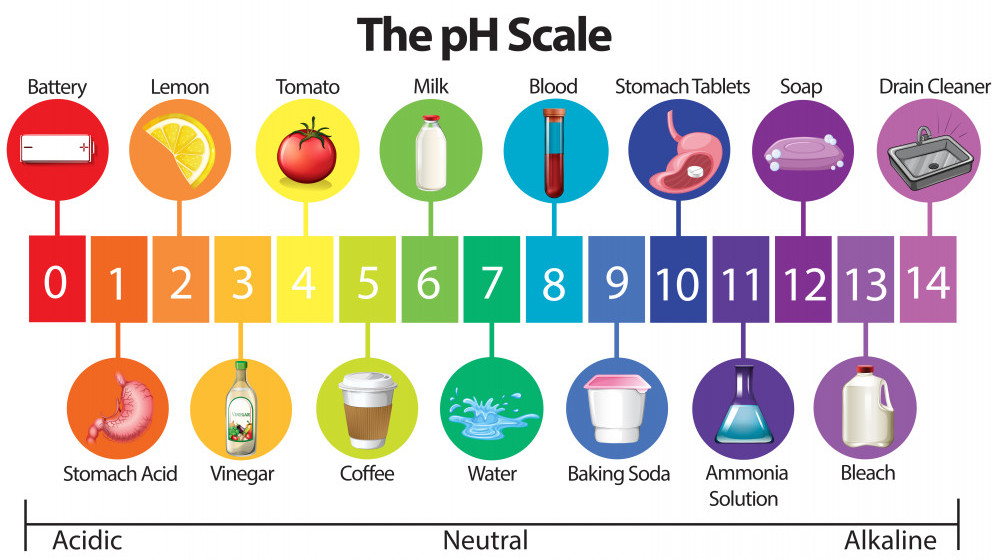
Key health organizations provide the following pH guidelines for drinking water:
- 6.5 to 8.5 – World Health Organization (WHO)
- 6.5 to 8.5 – US Environmental Protection Agency (EPA)
- 6.5 to 8.5 – US Food and Drug Administration (FDA)
- 7 to 10.5 – Health Canada
Interesting Facts about pH Levels in Water
I’ve scoped out multiple sources of information and consolidated facts about pH for water that I’d like to share with you.
- In general, high pH alkaline water is not unsafe for human consumption but will have other impacts worth mentioning:
- pH > 10 may cause eye and skin irritation
- pH > 8.5 will result in bitter-tasting water
- pH > 8.0 will inhibit the effectiveness of chlorination leading to a potential increase in contaminants/pesticides in your drinking water
- pH between 7.35 and 7.45 is normal for human blood
- pH < 6.5 in water is unsafe because it can corrode pipes and the surrounding infrastructure resulting in increased concentrations of lead, copper, and magnesium which can be toxic for humans.
- pH < 6.5 will have a sour taste
- pH < 4.2 will kill all fish and other aquatic creatures
- pH < 2.5 will cause eye and skin irritation
What is the Best pH Level for Drinking Water?
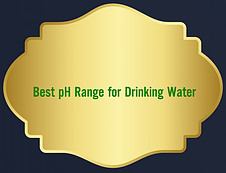 Some people believe that high alkaline water consumption is beneficial for your health. The health benefits include pro-aging properties, colon-cleansing properties, immune system support, hydration, and skin health, cancer resistance, and can help people with acid reflux, high blood pressure, and diabetes. The fact is that there is no scientific evidence supporting this so at this time I will not consider it in my evaluation.
Some people believe that high alkaline water consumption is beneficial for your health. The health benefits include pro-aging properties, colon-cleansing properties, immune system support, hydration, and skin health, cancer resistance, and can help people with acid reflux, high blood pressure, and diabetes. The fact is that there is no scientific evidence supporting this so at this time I will not consider it in my evaluation.
Whatever the pH of the drinking water is, we know that the human body will primarily use three mechanisms (buffer systems, respiratory control, and renal control) to maintain the pH range for blood between 7.35 and 7.45. My thought is why don’t we make it easier on our bodies and target drinking water that aligns with this range?
Taking this into account and in consideration of other factors presented above, my recommendation for the best pH level for drinking water is in the 6.5 to 7.5 range.
Testing the pH Level of your Drinking Water
As explained here, performing a water analysis on your drinking water is a prerequisite to understanding your specific needs for water filtration if required. There are simple and inexpensive do-it-at-home test kits/devices on the market that will allow you to accomplish this effectively.
There are 3 ways of testing the pH of your drinking water:
- 1. Using a pH meter
- 2. Using 0-14 test strips
- 3. Using litmus paper
The most accurate way is by using the pH Meter. This is what a typical pH Meter looks like:
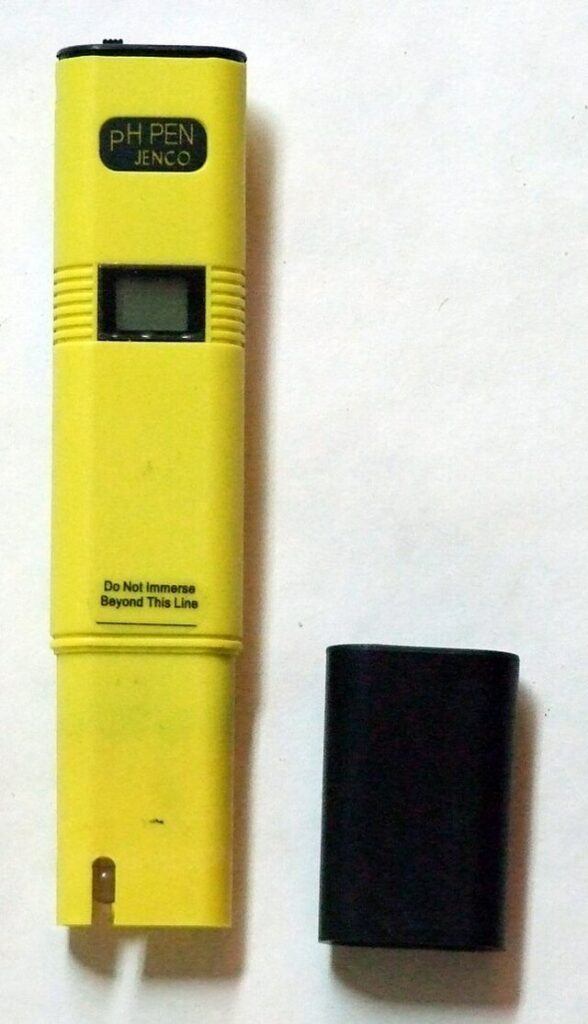
Simply fill the glass with water, insert the meter such that the water is below the immersion line, wait 5 minutes for the water temperature to settle, and then simply read the pH on the digital display.
Here are our picks from Amazon:
- Digital PH Meter, PH Meter 0.01 PH High Accuracy Water Quality Tester with 0-14 PH Measurement Range for Household Drinking, Pool and Aquarium Water PH Tester Design with ATC
- 2024 All-New pH Meter for Water – High Accuracy Digital pH Tester (0.01 Precision) with UL Certification and 3 pH Calibration Powders
Using test strips, although not as accurate, is still an effective way to test the pH of your drinking water. This is what a typical test strip looks like:
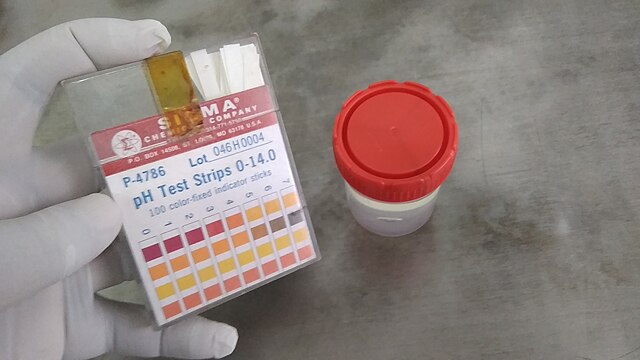
Fill a glass with water and let the temperature settle for 5 minutes, insert the test strip into the water and the colors on the strip will instantly change, compare the colors to the 0-14 test strip scale to find the matching pH configuration.
Here are our picks from Amazon:
- pH Test Strips 0 to 14 (200 ct) for Water & Liquids. Universal Plastic pH Strips Drinking Water
- Jovitec Universal pH Test Paper Strip Roll, pH Full Range 0-14
Using Litmus paper is the least accurate way since it will only tell you whether the water is acidic or alkaline. This is what a typical red/blue litmus paper test looks like:
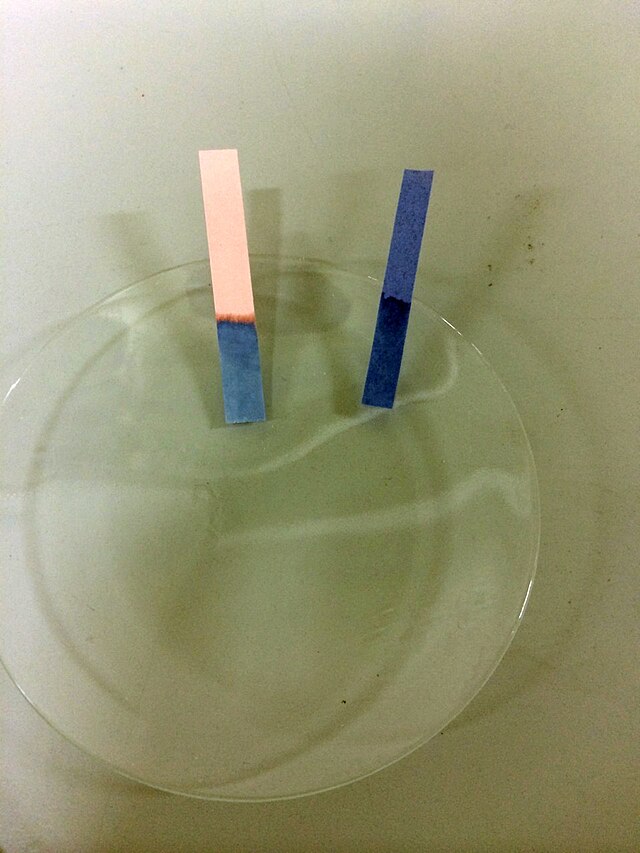
Fill a glass with water, insert the blue and red litmus paper in the water, and wait for the color to change; if you have alkaline water the red strip will turn blue and the blue strip will stay blue, and in acidic water, the red strip will stay red and the blue strip will turn red.
Here is our pick from Amazon:
How to Control the pH in Drinking Water
Water filtration does not significantly change the pH of water, but it can remove impurities that might help regulate the pH fluctuations, making it more neutral. As an example, if your water has a high level of chlorine, filtering it will remove that chlorine and make your water more neutral.
In the same way, water purifiers using reverse osmosis (RO) filters, will not significantly change the pH of water unless they have alkalisers in the last filter stage. This works by adding good minerals such as calcium and magnesium back into the filtered water, acting as a re-mineralizer that increases pH levels to 8.5.
The most effective way of controlling pH is by using water ionizers. Water ionizers change the pH of water by adding ions to the water. These are very expensive devices that also provide the User with the ability to select the desired pH level of water.
Conclusion
I have provided you with a summary of factual information regarding the pH for drinking water as well as my suggested target for the best pH level for drinking water which is in the 6.5 to 7.5 range.
My recommendation is to test the pH levels of your drinking water and determine whether you want or need to increase the alkalinity of your water by using the methods described above.
Should you have questions on the above please leave a comment below and I will do my utmost to respond promptly.
